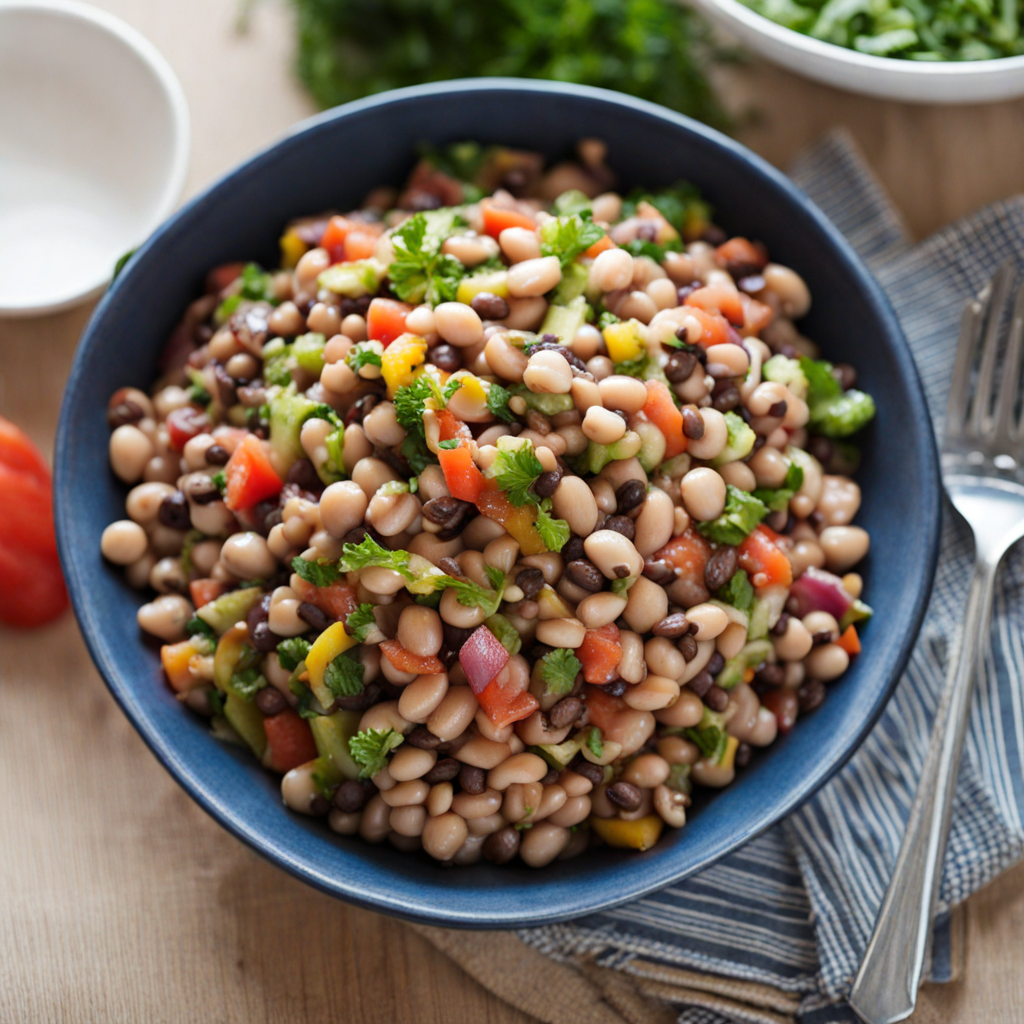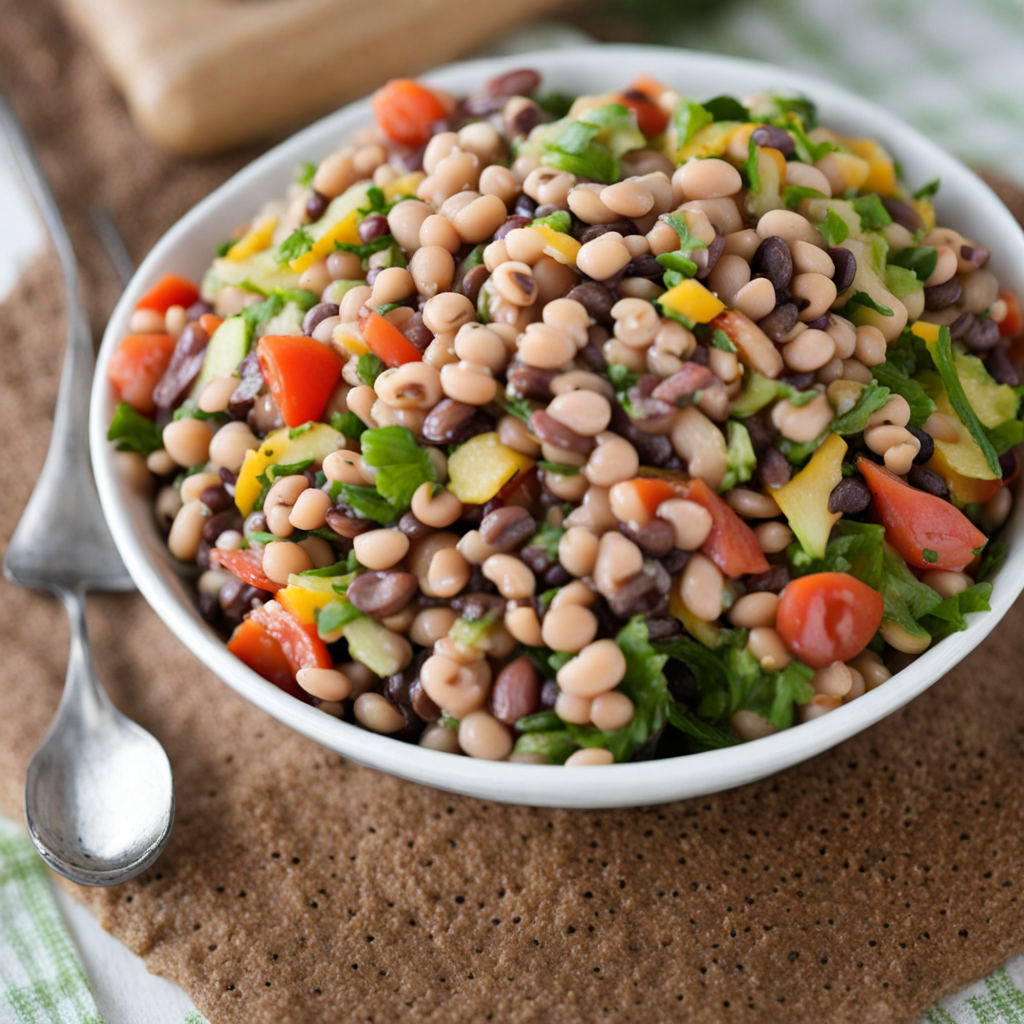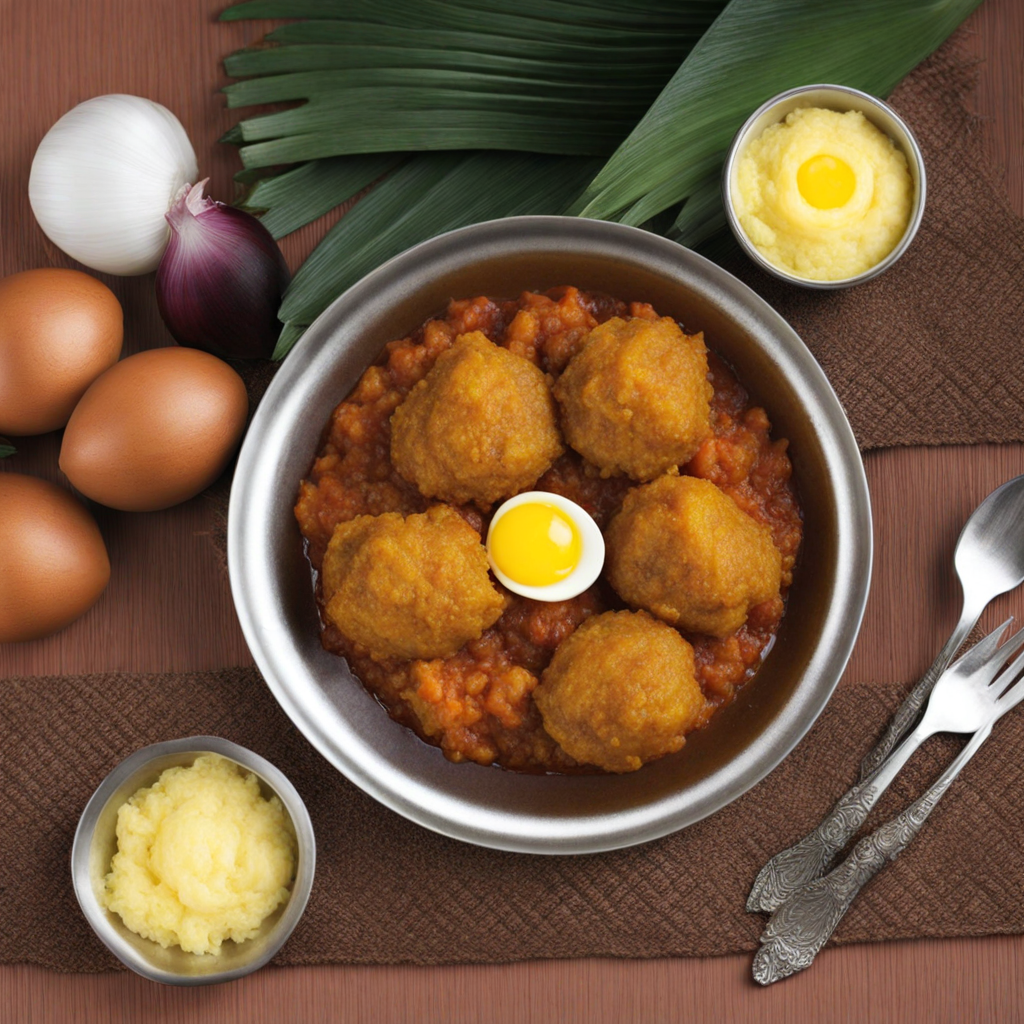Black-eyed Pea Salad
Black-eyed Pea Salad is a vibrant and hearty dish that showcases the rich flavors and textures of Ghanaian cuisine. The star ingredient, black-eyed peas, offers a creamy and slightly nutty flavor that serves as the perfect base for this refreshing salad. Typically cooked until tender, these legumes are then combined with a medley of fresh vegetables such as diced tomatoes, crisp bell peppers, and finely chopped onions, creating a colorful contrast that is both visually appealing and deliciously satisfying. In addition to the vegetables, the salad is often enhanced with aromatic herbs and spices, such as parsley or cilantro, which add layers of freshness and complexity. A zesty dressing made from a blend of lime or lemon juice, olive oil, and a touch of chili pepper elevates the dish, giving it a delightful kick. The combination of flavors results in a salad that is not only refreshing but also packed with nutrients, making it a wholesome option for any meal. This dish is typically enjoyed as a side or a light main course, perfect for picnics or gatherings. Its adaptability allows for various additions, such as avocados or cucumbers, catering to different tastes while maintaining its essence. Black-eyed Pea Salad is a celebration of Ghanaian ingredients and culinary traditions, inviting food lovers to explore new tastes and enjoy the vibrant, hearty essence of West African cuisine.
How It Became This Dish
The History of Black-Eyed Pea Salad in Ghana Black-eyed peas, known as "cowpeas" in many parts of the world, have a rich and varied history in Ghana, where they are celebrated not only for their nutritional value but also for their cultural significance. The black-eyed pea salad, a refreshing and hearty dish, has become an essential part of Ghanaian cuisine, embodying the intersection of tradition, agricultural heritage, and communal values. #### Origins of Black-Eyed Peas The black-eyed pea is believed to have originated in West Africa, making it a staple in the diets of many African nations, including Ghana. Archaeological evidence suggests that this legume has been cultivated in the region for thousands of years. The peas were introduced to the Americas during the transatlantic slave trade, where they became an integral part of African-American cuisine. However, in Ghana, they have retained their deep-rooted significance, with ties to agricultural practices and cultural rituals. In Ghana, black-eyed peas are known as "nyadua," and they are often used in various traditional dishes. The legumes thrive in the tropical climate, making them a reliable crop for farmers. Their resilience and ability to grow in less-than-ideal soil conditions have made them a symbol of sustenance and survival, particularly for rural communities. #### Cultural Significance The black-eyed pea is more than just an ingredient; it is steeped in cultural symbolism. In Ghanaian culture, black-eyed peas are commonly associated with prosperity and good fortune. They are traditionally consumed during the New Year celebrations, as it is believed that eating them will bring good luck for the year ahead. This practice is mirrored in other cultures, such as the Southern United States, where black-eyed peas are similarly eaten on New Year’s Day. In addition to their role in celebrations, black-eyed peas are often included in communal meals, emphasizing the importance of sharing and togetherness in Ghanaian society. Whether prepared as a stew, incorporated into stews, or served as a salad, black-eyed peas bring people together, fostering a sense of community and belonging. The act of preparing and sharing meals is integral to Ghanaian culture, and black-eyed pea salad exemplifies this tradition. #### Development Over Time As Ghanaian cuisine evolved over the centuries, so too did the black-eyed pea salad. The basic recipe typically includes cooked black-eyed peas, diced vegetables (such as tomatoes, onions, and bell peppers), and a dressing of oil, vinegar, and spices. However, regional variations and personal preferences have led to numerous adaptations. In the early 20th century, as urbanization increased and the influence of Western cuisines began to permeate Ghana, the black-eyed pea salad began to incorporate more diverse ingredients. For instance, the addition of avocados, which became popular due to their creamy texture and nutritional benefits, gave the salad a modern twist. Additionally, the incorporation of fresh herbs like parsley or cilantro added layers of flavor and freshness that appealed to a wider audience. With globalization in the late 20th and early 21st centuries, public interest in healthy eating and plant-based diets surged. This trend brought renewed attention to traditional dishes like black-eyed pea salad. The salad's high protein content, fiber, and low-fat profile made it an attractive option for health-conscious individuals. As a result, black-eyed pea salad began to appear on menus in restaurants and cafes across Ghana, often served as a side dish or as part of a larger meal. #### Contemporary Influence Today, black-eyed pea salad represents a fusion of traditional Ghanaian cuisine and modern culinary practices. Chefs and home cooks alike experiment with the dish, adding ingredients like corn, cucumbers, or even tropical fruits to create a vibrant and colorful salad that reflects Ghana's agricultural bounty. These adaptations not only celebrate the rich flavors of Ghanaian produce but also contribute to a growing awareness of the importance of local sourcing and sustainability. Social media has played a significant role in the resurgence of interest in traditional dishes, including black-eyed pea salad. Platforms like Instagram and TikTok have allowed food enthusiasts to showcase their culinary creations, often featuring vibrant salads that highlight the beauty of Ghanaian ingredients. This exposure has encouraged a younger generation to explore their culinary heritage, leading to a revival of interest in traditional recipes and the importance of preserving cultural identities through food. Moreover, the rise of the diaspora has brought black-eyed pea salad to international tables. Ghanaian expatriates and food lovers around the world have embraced this dish, adapting it to local contexts while maintaining its essential character. Food festivals, cookbooks, and online cooking classes featuring Ghanaian cuisine have introduced black-eyed pea salad to an even broader audience, showcasing its versatility and inherent appeal. #### The Future of Black-Eyed Pea Salad As Ghana continues to navigate the complexities of globalization, the black-eyed pea salad remains a steadfast symbol of cultural identity and resilience. The dish serves as a reminder of the importance of community, tradition, and the celebration of local ingredients. Its adaptability ensures that it will continue to evolve, reflecting contemporary tastes while honoring its rich heritage. Furthermore, as issues of food security and sustainable agriculture gain prominence, the black-eyed pea, with its ability to enrich the soil and its nutritional benefits, positions itself as a vital component of Ghana's agricultural landscape. Initiatives to promote local farming and traditional crops may further elevate the status of black-eyed peas and their role in meals, ensuring that future generations appreciate both the flavors and the cultural narratives behind this beloved dish. In conclusion, black-eyed pea salad is a culinary emblem of Ghana, encapsulating the nation’s agricultural history, cultural significance, and the enduring importance of togetherness. Its journey from a simple, nutritious legume to a celebrated salad reflects the dynamic nature of Ghanaian cuisine and its ability to adapt and thrive in an ever-changing world. As Ghana moves forward, the black-eyed pea salad will undoubtedly continue to nourish both body and spirit, reminding all who partake of the rich tapestry of flavors and traditions that define this vibrant culture.
You may like
Discover local flavors from Ghana







